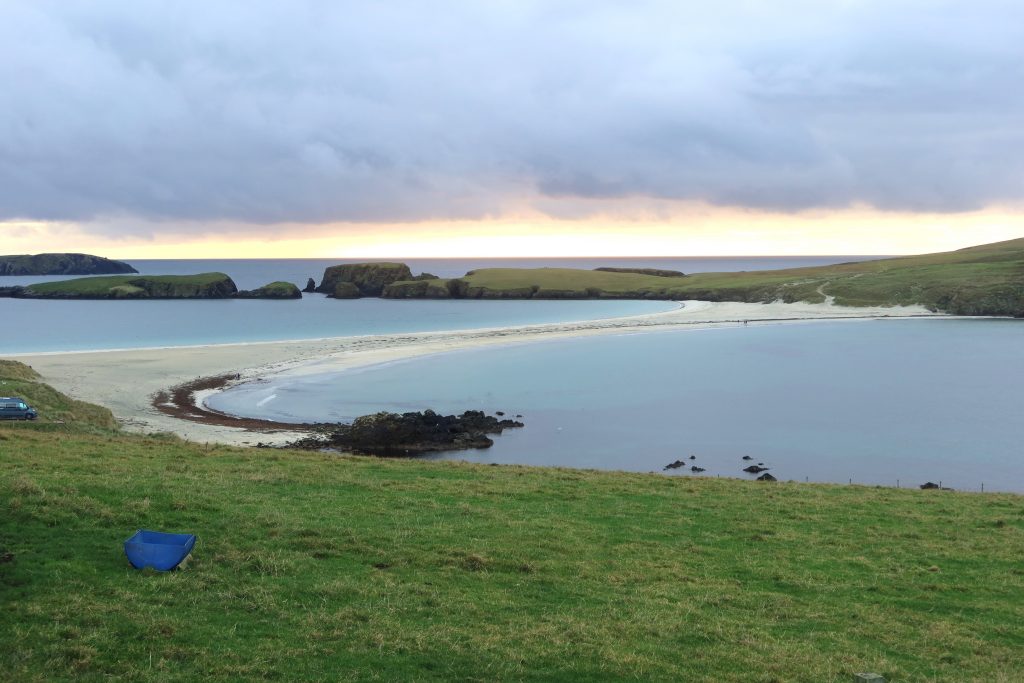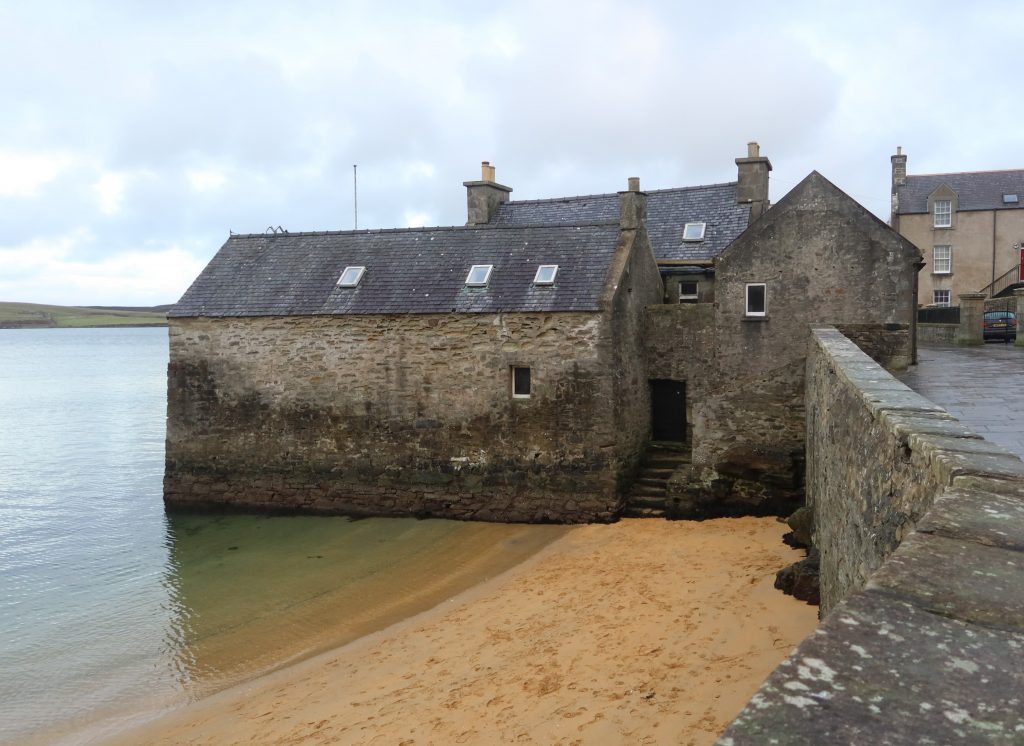With the weather improving we left Suðuroy in the morning of October 17th to head across to the Shetland Islands. The passage was about 170 miles and the hope was to head across at the same time as a small band of anti-cyclonic wind so that we could avoid using the engine. We knew that this would probably mean some early motor-sailing until the breeze kicked in and so it proved. Once it did though it was mostly consistent and for a period during the night the weather even improved to the extent that we could do some star-spotting. That proved a fairly short-lived diversion, but it was still a good passage, mostly sailing and at time making around 8-9 knots.

Our destination was Scalloway on the Shetlands – a fairly small town around 10 miles south of Lerwick. We made good time and the final approach was around lunchtime, sailing all the way up the approach channel and only taking the sails down when we were almost right on top of the jetty.

Scalloway, although not a parge town, has long been populated. In 1600 Scalloway Castle was built by the 2nd Earl of Orkney, though this is just remains now. Of course fishing is an important part of the local economy with salmon farming starting to take over from more traditional pelagic fishing. The traditional inshore fishing boats used on the islands are the yoal and these were often Norwegian in design and build. Norwegian boatbuilders from around the Bergen area built yoals from about the 16th century. These were then taken apart and ‘flat packed’ for shipping to Scalloway – they thought of this long before IKEA. However, unlike IKEA, instead of sending complicated assembly instructions (no doubt with screws or parts left over!), they sent actual boatbuilders to rebuild the flat packs – IKEA could definitely learn something from this. Many of the boatbuilders stayed for years in Shetland, and some even married there.
These links with Norway continued through the Second World War when Scalloway was the base for the Shetland Bus. This service was a lifeline to the occupied Norwegians. Fishing boats transferred agents in and out of Norway and carried weapons, radios and other essential supplies. Initially the group was called the Norwegian Naval Independent Unit (NNIU) but in 1943, it became an official part of the Royal Norwegian Navy and was renamed the Royal Norwegian Naval Special Unit (RNNSU). It started as just small fishing boats but later on three fast submarine chasers – Vigra, Hessa and Hitra – were also added to try and meet the demand for the service. In central Scalloway there is a memorial commemorating the service. The bravery of the people who did this is astonishing and is something which should be remembered.
Once moored we were taken on a tour in two taxis around the southern section of the island. This started with a stop at Sumburgh Head – the southern most point of the islands and a popular tourist destination. The main draw is the bird cliffs and the puffins who burrow into the cliffs in huge numbers. These clumsy little birds seem to have attracted a cachet and draw people in ever greater numbers. At Sumburgh they apparently wander around completely oblivious to the hordes fawning over them. I say apparently because, of course, we are outside puffin season, so there were none there! There were fulmars and guillemots and razorbills in huge numbers, but not a single puffin. They have all gone to sea, only to return to the same burrows to breed again next season. From Sumburgh we headed back via various beautiful spots – white sand beaches with seals parading on them, a sand spit and back into Lerwick via a brock just on the outskirts of town. The taxis dropped us in Lerwick with an agreement to pick us up later, so after a short look around the old centre and harbour (including ‘the house in Shetland (TV)’), we found a pub and, slightly counter-intuitively, enjoyed a couple of pints of Guinness. The Scottish draft beers apparently weren’t available until later on when the live music started in the lounge bar!



